Flotation – Gibbs Adsorption Equation
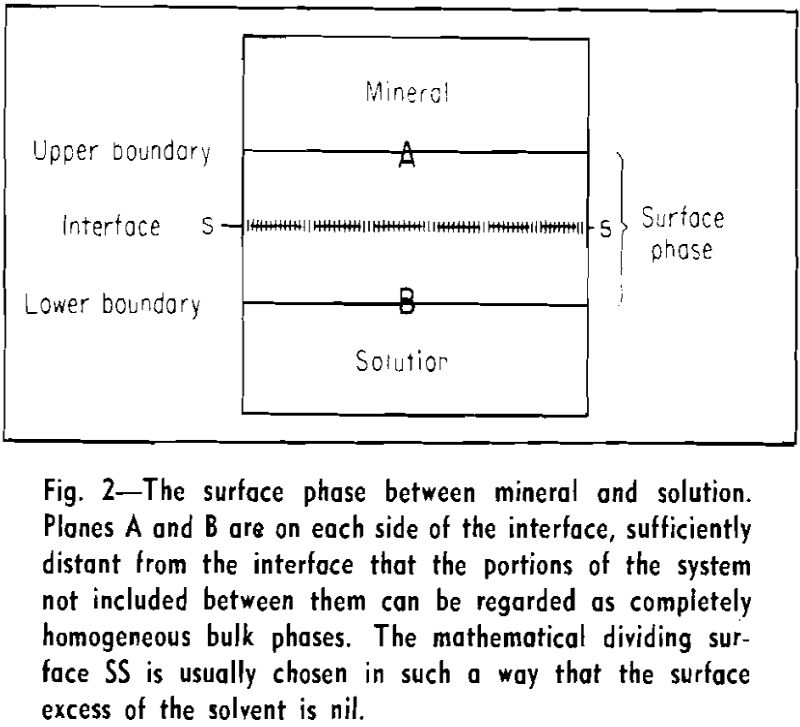
The technique of concentrating valuable minerals from lean ores by flotation depends upon the creation of a finite contact angle at the three-phase contact, mineral-water-air. If the mineral is completely wetted by the water phase, contact angle zero, there is no tendency for air bubbles to attach themselves to the mineral. The contact angle is […]
Soap Flotation

Flotation test work on Bolivian tin ores some years ago led to the development of several workable schemes of selective soap flotation, but left unanswered many questions of soap-flotation chemistry. Accordingly, the study of the activation and soap flotation of quartz just reported was undertaken as a start toward the elucidation of some of the […]
Effects of Oxidation of Coal Flotation
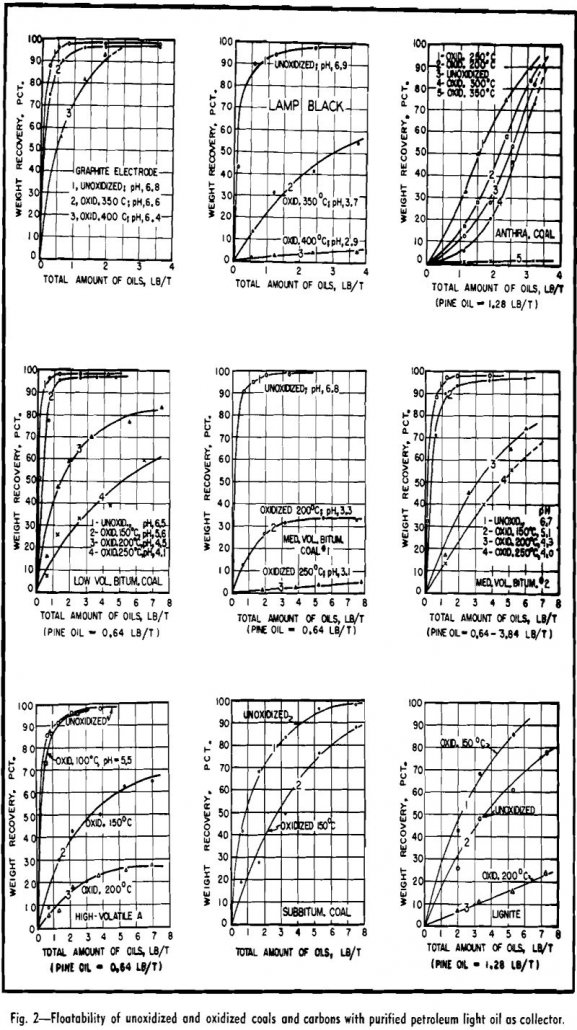
The effects of oxidation on the flotation behavior of sulphide minerals have been extensively studied, but no similar study has been made of coals. Coals of bituminous and lower rank undergo atmospheric oxidation during mining and storage, and their degree of oxidizing increases with temperature and time of exposure. The problem of recovering fine oxidized […]
Effect Starch on Quartz and Hematite Suspensions
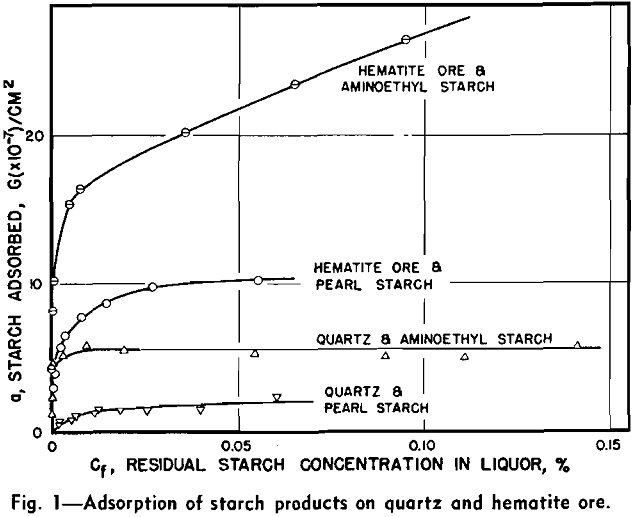
During the course of an investigation of the effects of various starch products on hematite and quartz in regard to their separation by flotation, it was found that whereas most starches flocculated suspensions of hematite in water, they did not flocculate similar suspensions of quartz. However, a derivative of whole corn starch containing approximately one […]
Adsorption of Sodium Ion on Quartz
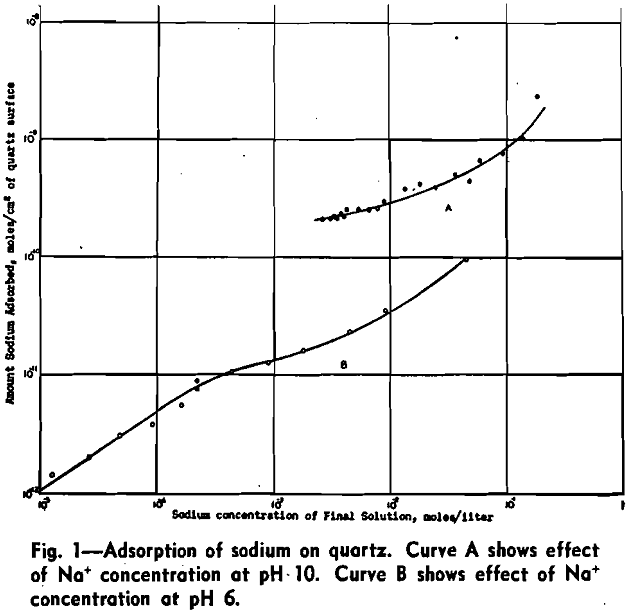
When a mineral particle is fractured, bonds between the atoms are broken. The unsatisfied forces that appear at the newly formed surface are considered to be responsible for the adsorption of ions at the mineral surface. A knowledge of the mechanism and extent of ion sorption from solution onto a mineral surface is of interest […]
What are the Applications of Xanthates to Flotation
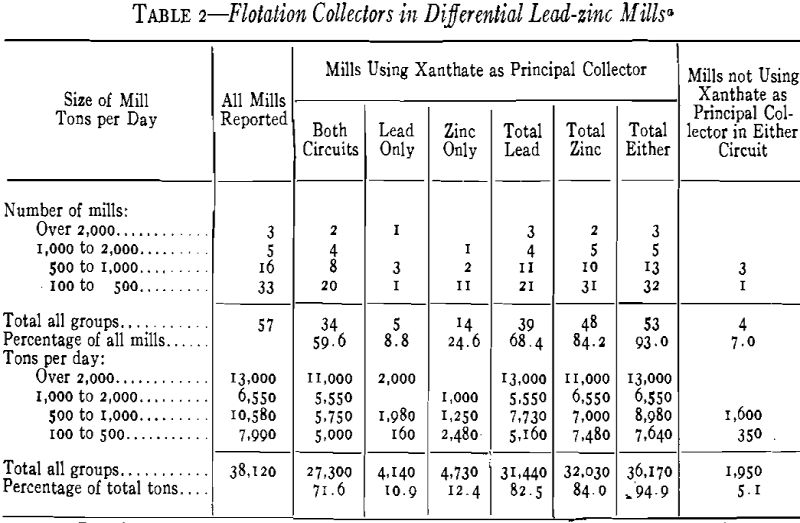
Most papers on xanthate have dealt with principles rather than practice. On the assumption that many millmen are interested in knowing where and in what manner the xanthates are being used in mills other than their own, this paper will summarize the results of a recent survey of North American plants. A brief background story […]
Flotation Rates and Flotation Efficiency
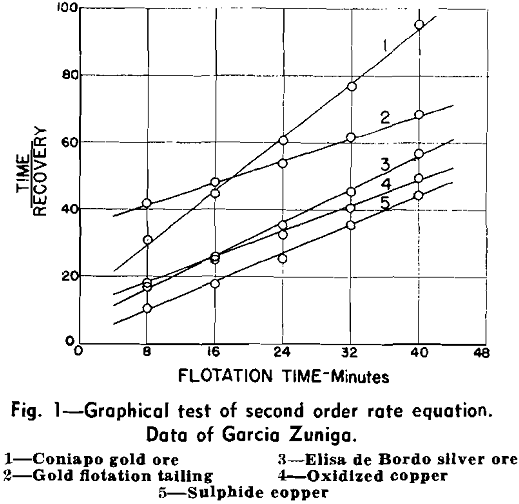
The separation of minerals by flotation can be regarded as a rate process, with the extraction of any one mineral determined by its flotation rate, and the grade of concentrate by the relative rates for all the minerals. So regarded, the significant variables for the process are those that control the rates. These variables are […]
Effect of Flotation Air Bubble Size
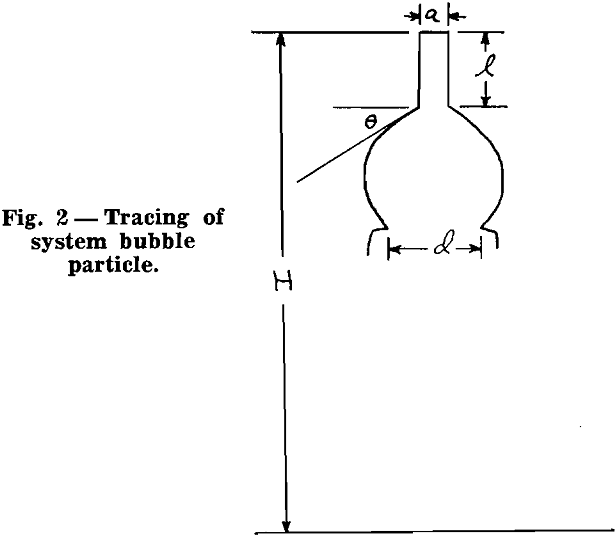
A search of the literature reveals that no measurements have been made of the forces acting between a small solid particle whose surface is hydrophobic, and an air bubble to which the solid adheres, both immersed in water. Analyses have been made of the forces acting to support a greased solid on the surface of […]
Callow Flotation Cells – Design and Operation
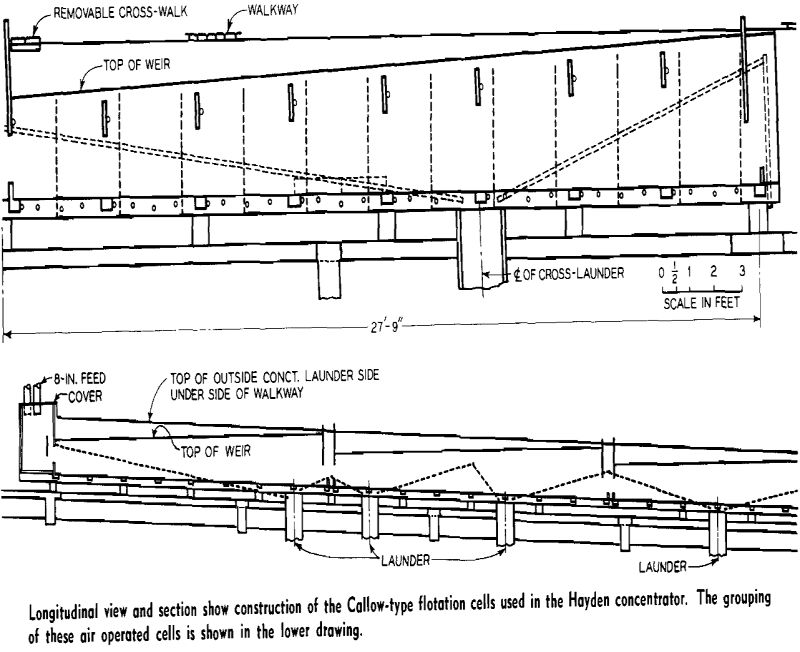
Callow-Type flotation cells, with various modifications, have been employed at the Hayden concentrator since 1917. Other flotation machines, such as matless-air and mechanically agitated types, which have been tested in competition, have failed to handle tonnages or give metallurgical results equal to the modified Callow-type cells on the Ray ores. While experimental work was conducted […]
Cationic Collector for the Flotation of Quartz
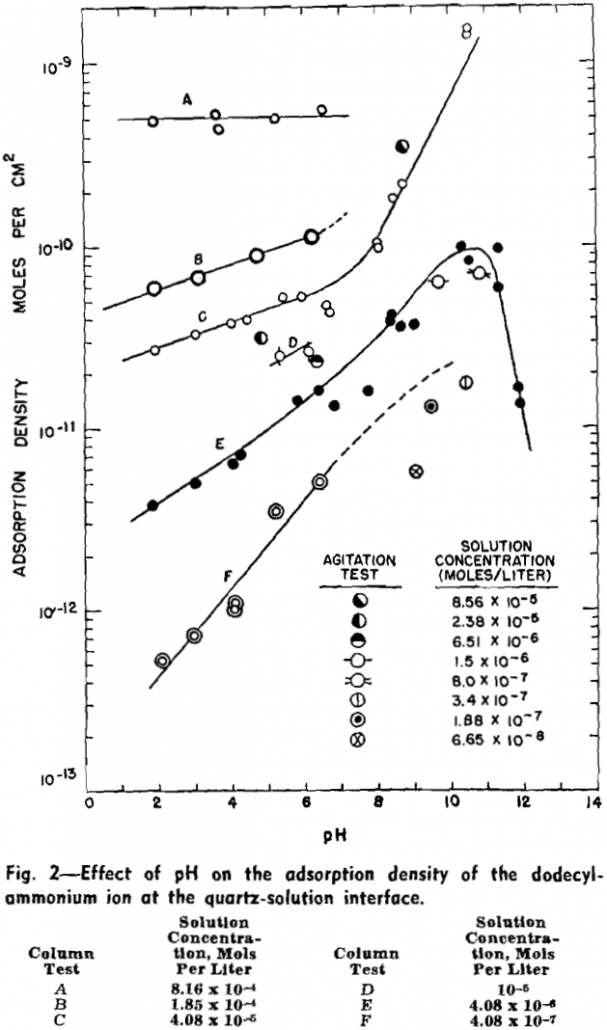
The behavior of collectors at the mineral-solution interfaces is usually explained in terms of an ionic adsorption process. Through the distribution of collector ions between the solid surface and the co-existing solution phase the mineral is believed to acquire a water-repellent surface coating. Quartz A —100 mesh ground crystalline quartz was infrasized; the products of […]
